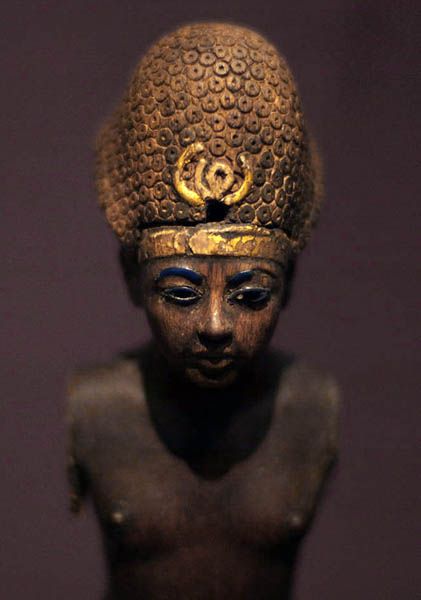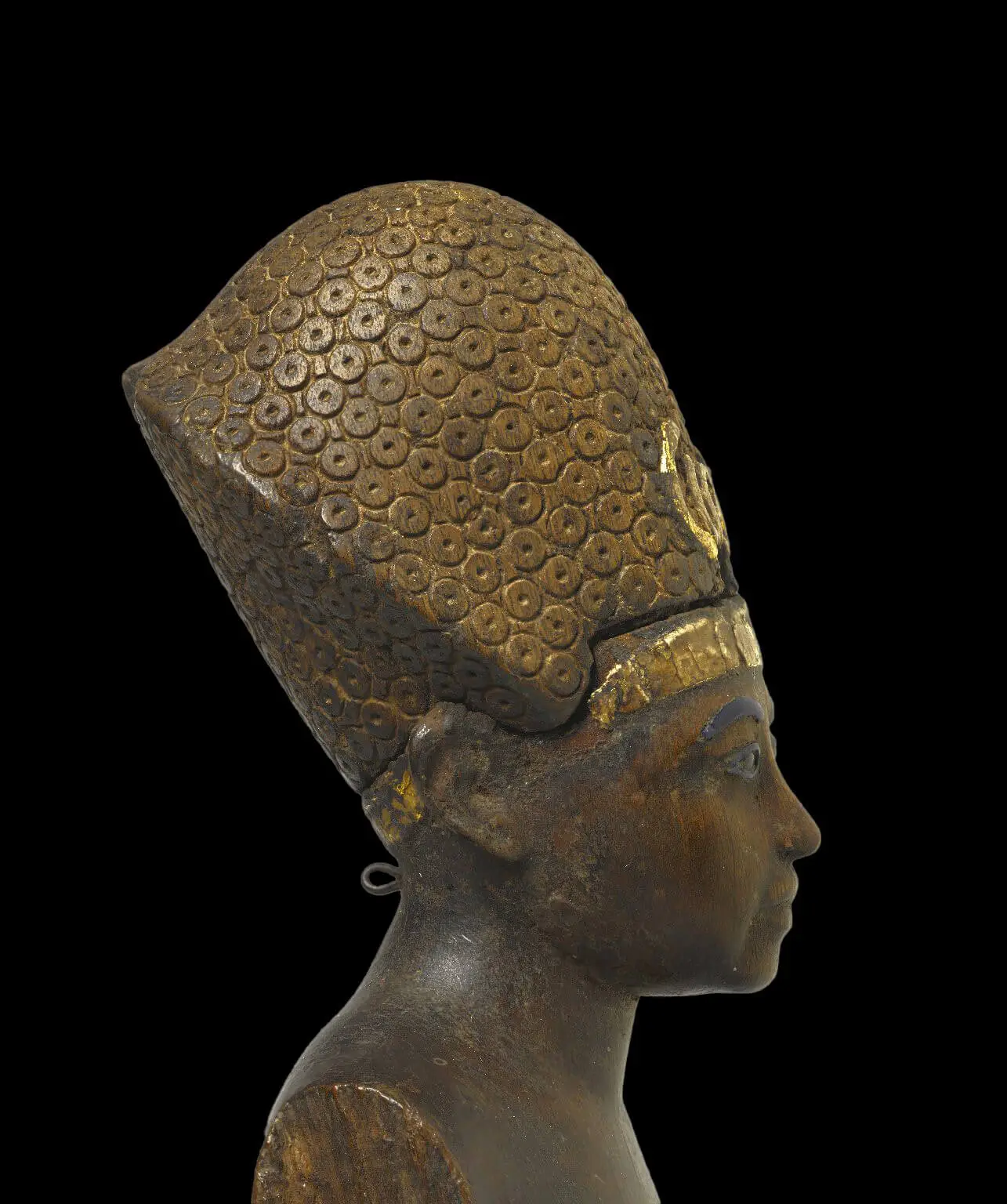Standing Wooden Statuette of Amenhotep III

Crafted from wood, inlaid with gold leaf, glass, and pigment .
Height: 10 ⅜ in. (26.3 cm)
New Kingdom, Egypt
Brooklyn Museum, Charles Edwin Wilbour Fund

Amenhotep III, also known as Amenophis III, was one of ancient Egypt’s most powerful and prosperous pharaohs, ruling during the 18th Dynasty around 1390–1352 BCE. His reign marked the height of Egypt’s wealth, stability, and artistic achievement.

Under his rule, Egypt enjoyed peace and extensive diplomatic relations with neighboring kingdoms, as reflected in the famous Amarna Letters.

Amenhotep III commissioned an extraordinary number of monuments, temples, and statues, including the magnificent Luxor Temple and his mortuary temple at Thebes, guarded by the colossal statues known as the Colossi of Memnon.

He was often depicted as a divine ruler closely associated with the sun god Amun-Ra, emphasizing his semi-godly status. His reign laid the cultural and political foundations for the later religious revolution of his son, Akhenaten.











